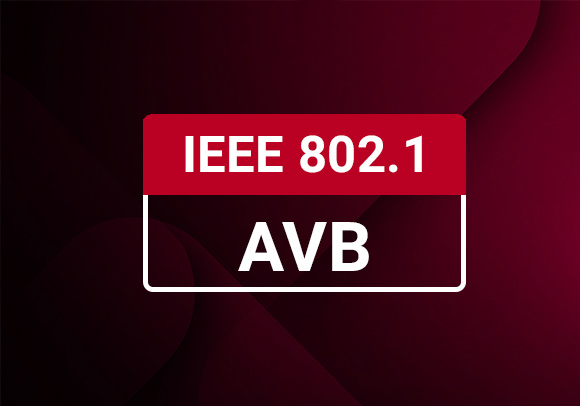Adapt to emerging AV-over-IP standards
It’s clear that the benefits of moving to IP-based transport for audio, video and associated data are becoming better understood by the AV and media industries. IP networks offer scalability to support any audio and video formats, with multichannel distribution over LAN/WAN and cloud. Network addressable equipment can be the foundation for AV-as-a-Service (AVaaS) and leveraging the maturity and scale of the IT industry to move media around is obviously attractive. However, there is still a lot of uncertainty over ease-of-use, robustness, network management and quality of service, network security and content protection and system interoperability between vendors.
With unrivalled transceiver performance and proven Ethernet MAC solutions from 10Mbps to 400Gbps, AMD platforms not only provide the ideal bridge between existing baseband AV connectivity and IP networks, but also a programmable and scalable platform that supports most protocols, will adapt to emerging technologies and standards to enable and accelerate the adoption of IP networks for media transport.

AV-OVER-IP PROTOCOLS VYING FOR SUPREMACY
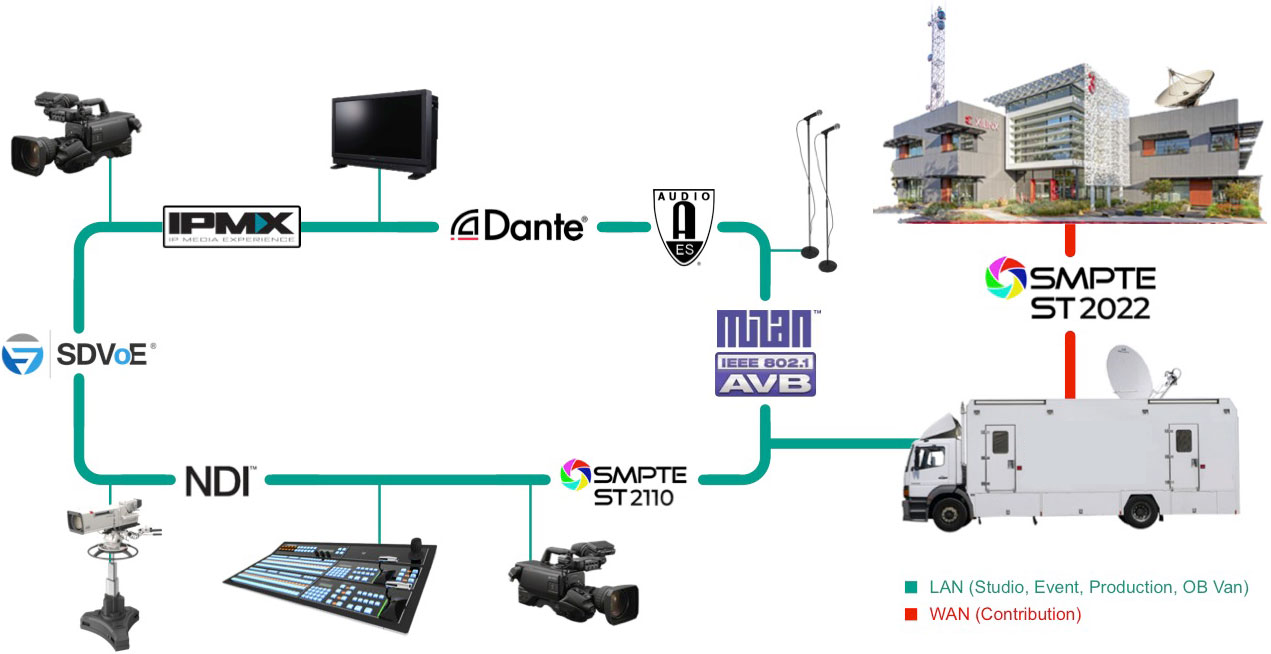
SMPTE ST 2110
Interoperable and scalable AV-over-IP used right across the broadcast industry
The SMPTE ST 2110 Professional Media Over Managed IP Networks suite of standards developed by JT-NM (SMPTE, VSF, AIMS, AMWA and EBU) is a major contributing factor to an industry-wide move to a common, interoperable and scalable IP-based transport protocol. Audio, video and ancillary data are carried as separate and independent streams across the network and can carry both compressed and uncompressed media. The standards also use ST 2059 for timing and synchronization, leveraging IEEE 1588 PTP, as well as AMWA NMOS standards for the control plane and network management. AMD partners offer a wide range of IP to support the ST 2110, ST 2059 and NMOS standards that can be used across the chain, from cameras to displays, and alongside your own AV processing pipelines in the same AMD device.
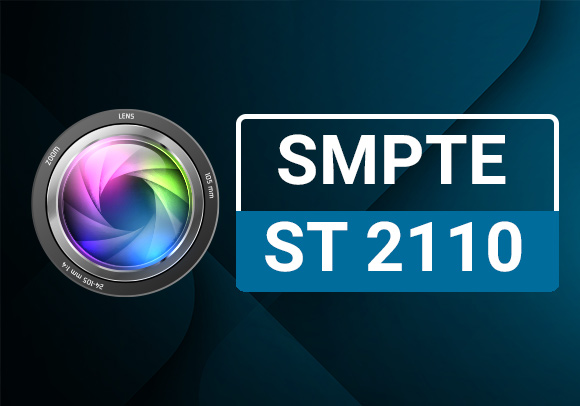
IPMX
The only interoperable, scalable and vendor-independent AV-over-IP standard for Pro AV
Developed by SMPTE, AMWA and AIMS, IPMX is based on the proven ST 2110 standard deployed throughout broadcast but adapted specifically for pro AV needs, with the addition of HDCP copy protection, network discovery and registration, and I/O management, including multichannel surround sound. The first truly open, interoperable and vendor-independent transport standard for Pro AV, IPMX supports any bitrate with compressed or uncompressed streams and is video format-agnostic. AMD partners have used AMD platforms to develop a range of plug-in solutions from IP cores to SoCs to get your equipment onto IPMX networks today and adapt to new features and future capabilities as they are introduced.

IPMX Resources
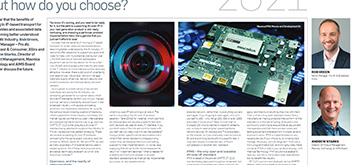
AV-over-IP: Decisions, Decisions…
Read now >
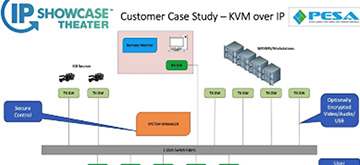
Is your AV-over-IP Network Really Interoperable?
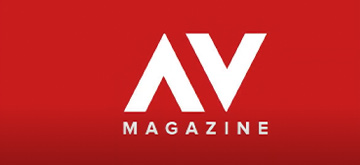
Benefits of IPMX
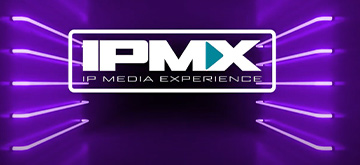
What is IPMX?

Introduction to MPA1000 4K HDMI over IP SoM

What is NMOS?
SMPTE ST 2022
Proven and deployed IP transport standards for contribution and backhaul
The SMPTE ST 2022 suite of standards have been instrumental in the deployment of AV-over-IP for over a decade, and are the primary protocol for contribution, primary distribution and backhaul links between studios and facilities. Unlike ST 2110, ST 2022 encapsulate audio, video and data together in the same stream but are capable of handling compressed and uncompressed streams, with CBR or VBR options and with very strong QoS, with robustness provided by FEC and hitless switching between redundant streams. AMD were at the heart of this pioneering work and continue to be a major ST 2022 deployment vehicle used by broadcast equipment providers. Our partners offer comprehensive IP cores to help you get to market quicker.
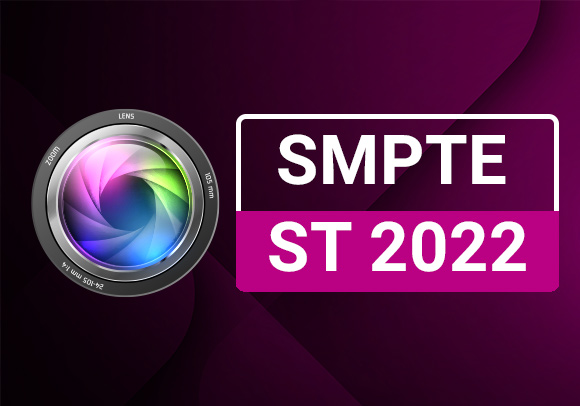
ndi
Giving everyone access to easy-to-use, high-quality video using equipment they already own
Developed by Newtek, the Network Device Interface (NDI®) is a high-performance standard that allows anyone to use real time, ultra-low latency video on existing IP video networks. The NewTek NDI Advanced SDK is designed to allow you to integrate NDI into embedded devices and is an ARM based SDK, providing stream level access to NDI, AMD FPGA implementation and full source code to allow an off-the-shelf AMD development kit to be used as a starting point for NDI encoding projects.

DANTE
Ethernet compliant audio networking technology for the live sound industry
Developed by Audinate, Dante® is used extensively throughout professional audio for implementing an easy-to-use audio-over-IP installation that can be used with existing networks. Equipment manufactures can integrate Dante audio in the form of hardware modules, devices, AMD IP cores and reference designs and software and can be used in products ranging from single channel microphones to massive 500+ channel mixing consoles.

AVB/TSN
Time sensitive networking and high QoS for professional media
Audio Video Bridging (AVB) is a suite of standards developed by the IEEE 802.1 AVB Task Group. AVB enhances Ethernet by providing precise timing and synchronization based on IEEE 1588 PTP, bandwidth reservation and QoS rules to ensure that audio and video streams are correctly handled through the network with guaranteed latency and sync. Time Sensitive Networking (TSN) builds upon AVB to expand the range, functionality and applications of the standard. AMD offers a range of AVB and TSN solutions that work with our Ethernet MAC product portfolio.
